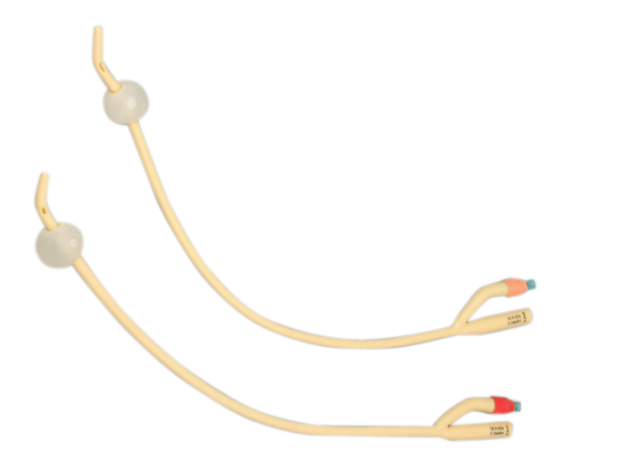
Foley Balloon Catheter Two Way is a medical device that helps you to breathe more easily in difficult environments. This catheter has a special design that makes it easier for you to breathe, and it comes with a tiemann (plastic valve) that makes the delivery of the balloon easy.
| Ref. No.: | Size: | Balloon capacity: | color: | Qty.Cs: |
|---|---|---|---|---|
| GCU200372 | 12 Fr/ Ch | 30ml | white | 400 |
| GCU200374 | 14 Fr/ Ch | 30ml | Green | 400 |
| GCU200376 | 16 Fr/ Ch | 30ml | Orange | 400 |
| NMU200378 | 18 Fr/ Ch | 30ml | Red | 400 |
| GCU200380 | 20 Fr/ch | 30ml | yellow | 400 |
| GCU200382 | 22 Fr/ch | 30ml | Violet | 400 |
| GCU200384 | 24 Fr/ch | 30ml | Blue | 400 |
| GCU200386 | 26 Fr/ch | 30ml | Pink | 400 |
| GCU200388 | 28 Fr/ch | 30ml | Brown | 400 |
| GCU200390 | 30 Fr/ch | 30ml | Grey | 400 |
Foley Balloon Catheter is a medical device that helps you to breathe more easily in difficult environments. This catheter has a special design that makes it easier for you to breathe, and it comes with a tiemann (plastic valve) that makes the delivery of the balloon easy.
The Foley Balloon Catheter is a catheter that uses a balloon to help maintain blood flow and relieve pressure in the chest. The Tiemann (plastic valve) makes it easier to use.
The Foley Balloon Catheter is a two-way catheter that uses a balloon to inflate the lumen of the catheter. This increases the flow of blood through the catheter and allows for easier access to critical areas. The Tiemann (plastic valve) helps control air pressure in the balloon, which helps to maintain an accurate inflation of the balloon and prevents over-inflation.
The Foley Balloon Catheter is a two way catheter that uses a plastic valve to help prevent air from entering the catheter. This type of catheter can be used for a variety of procedures, including diagnostic tests, surgery and interventional radiology. The benefits of using a Foley Balloon Catheter include: improved patient comfort and reduced anxiety; reduced risk of infection; and reduced risk of complications.
The risks of the Foley Balloon Catheter include infection, bleeding, and air embolism. Infection can occur if the catheter becomes contaminated with bacteria or if the catheter is inserted into an area of the body where there is a lot of bacteria, such as the rectum or vagina. Bleeding can occur if the valve fails, if the catheter becomes blocked, or if the catheter falls out. Air embolism can happen when air bubbles formed by blood flow get trapped in the balloon, causing blockage of blood vessels.
If you are looking for a way to provide more comfortable and efficient care to your patients, the Foley Balloon Catheter may be what you are looking for. This particular catheter is made with a plastic valve that helps to prevent air bubbles from forming during use, which can lead to improved patient comfort. Here are some tips on how to use this device:
1. First, make sure that the patient is adequately hydrated before procedure. This will help maintain healthy blood flow and reduce the risk of complications.
2. Clean the skin around the catheter insertion site with alcohol or hydrogen peroxide before insertion. This will help to avoid infection and irritation.
3. After cleaning the area, insert the catheter into the desired location using gentle pressure. Do not pull on the catheter excessively - this could cause damage or leakage.
4. Once in place, inflate the balloon using a syringe or pump until it is firm and inches away from the skin (do not over-inflate). Doing so may cause pain or discomfort for the patient.
5. To remove the balloon, slowly deflate it using a syringe or pump
The Foley Balloon Catheter is a two-way catheter that can be used for a variety of medical procedures. The Tiemann (plastic valve) allows for smooth, uninterrupted passage through the balloon catheter. This makes it ideal for procedures such as endoscopic retrograde cholangiopancreatography (ERCP), which is a procedure used to diagnose and treat pancreatic diseases. The Tiemann also makes the Foley Balloon Catheter less likely to cause embolism, which can lead to serious complications.